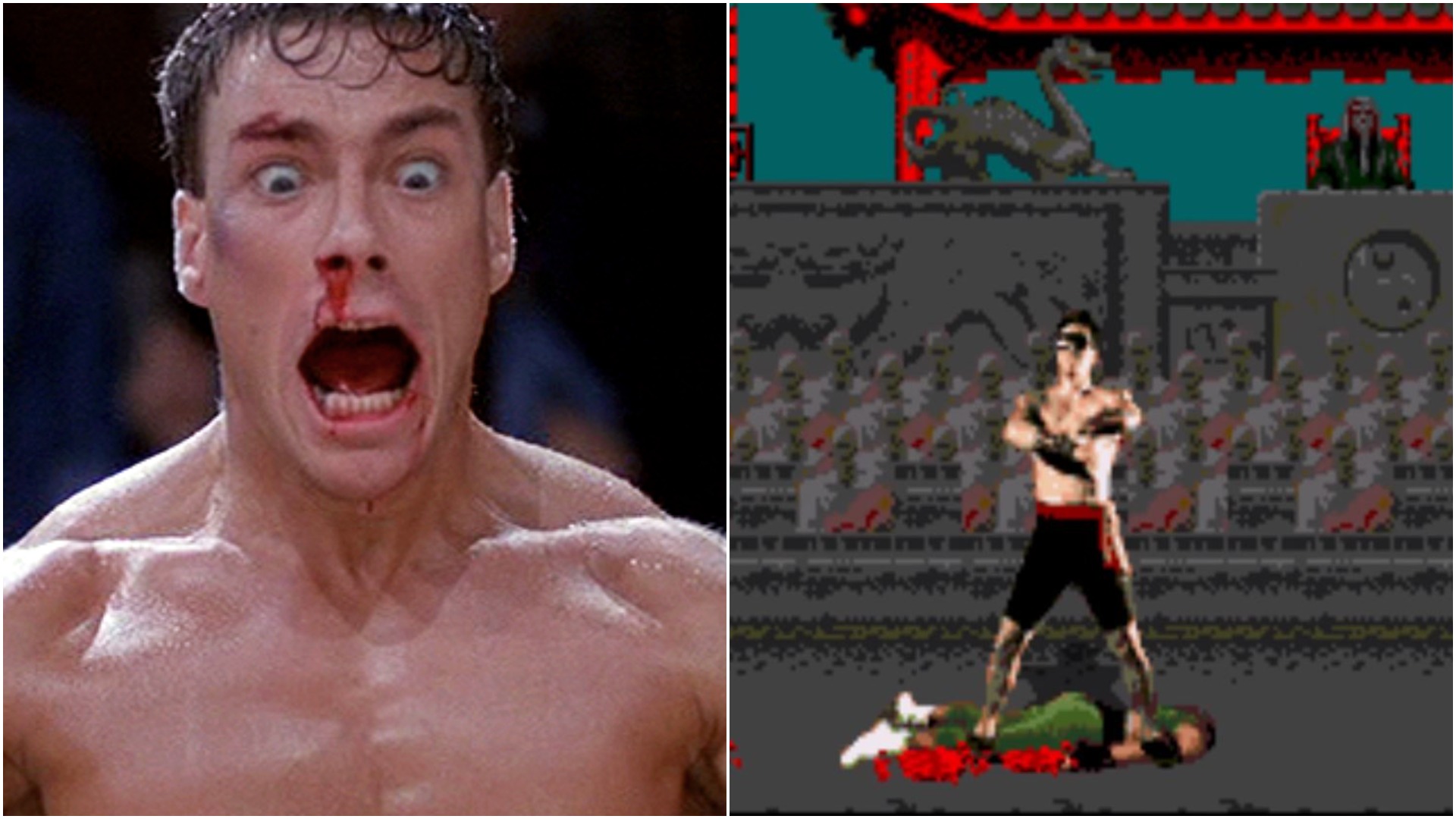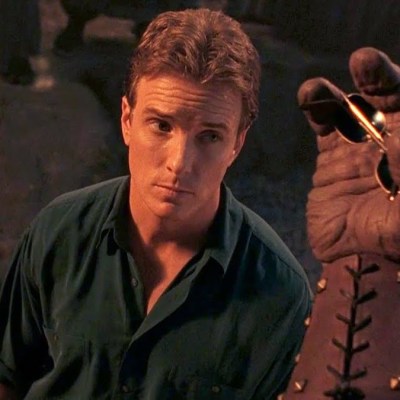As we eagerly anticipate the release of the latest Mortal Kombat movie, many find themselves looking back on Mortal Kombat’s 1995 big-screen debut. While that film has its charms and its fans (myself included), the movie has rightfully been criticized over the years for lacking many of the best qualities of the game as well as many of the best elements of the martial arts movies that clearly inspired it.
Of course, the relationship between Mortal Kombat and martial arts films has always been close. Not only did the game utilize a then-revolutionary form of motion capturing that gave it a standout cinematic look, but many aspects of the title were practically taken directly from some of the best and biggest martial arts movies of that era.
As the years go on, though, it becomes more and more clear that no martial arts movie impacted the development of Mortal Kombat more than Bloodsport. Maybe you’ve heard that MK was inspired by that beloved movie, but a deeper look at the relationship between Bloodsport and Mortal Kombat reveals the many ways both big and small that the two would go on to change gaming forever.
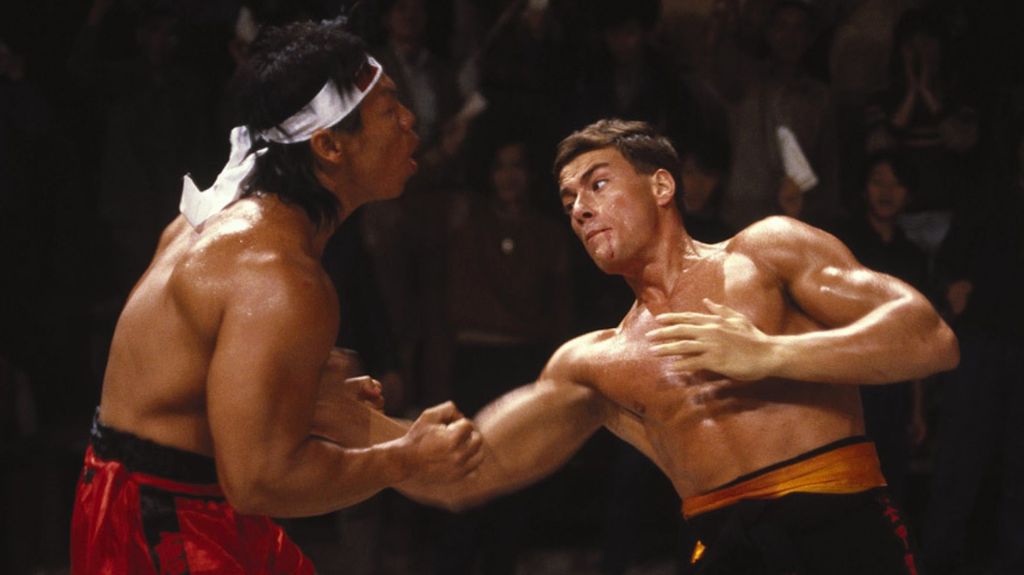
Bloodsport: The Crown Jewel of Absurd ‘80s Martial Arts Movies
While the 1970s is rightfully remembered as the decade when America became obsessed with martial arts (due in no small part to the influence of Bruce Lee’s legendary films), it really wasn’t until the 1980s that you saw major and minor studios compete to see who could produce the biggest martial arts blockbuster.
Of course, many of the martial arts movies of that decade were different from what came before. They had bigger budgets, were usually more violent, and, maybe most importantly, they generally catered more to Western audiences. Yes, the ‘80s is the decade that Jackie Chan and other Asian martial artists did some of their best work, but as more and more Western studios got in on the action, we saw the rise of a new kind of martial arts movie that more closely resembled the over-the-top violent action films popularized by Arnold Schwarzenegger.
That also meant the rise of a new kind of martial arts star who was typically either from America or played American characters in what we can now see was an effort to capitalize on the idea of American exceptionalism that was especially popular during the Reagan era. If you’re looking for some notable examples of that trend, I’d suggest checking out Best of the Best, Above the Law, and, naturally, American Ninja.
In many ways, though, 1988’s Bloodsport is the pinnacle of that time in martial arts movies.
Bloodsport co-writer Sheldon Lettich says he came up with the idea for the film while talking to a martial artist named Frank Dux. Among other things, Dux claimed to be a former undercover CIA operative who once participated in an underground martial arts tournament known as “Kumite” in order to take down the criminal organization that ran it. Dux also claimed he was the first American to ever win the tournament.
To be frank, Dux was full of shit and, despite the fact that Bloodsport bills itself as a story inspired by true events, Lettich knew it. Still, the idea of an American martial artist winning a global underground tournament featuring the world’s greatest fighters was too good to pass up.
Indeed, the absurdity of that premise is a big part of what makes the whole thing work. While Dux’s story was almost certainly “inspired” by the plot of Enter the Dragon, Bloodsport wisely veers away from that classic in ways that take advantage of the best (or at least most loveable) elements of that era.
The smoke-filled back room that hosts many of Bloodsport‘s key fights is far removed from the tropical paradise of Enter the Dragon, but it captures that vibe of an ‘80s pro wrestling arena where the stale air is punctured by the screams of a bloodthirsty crowd. Whereas many early martial arts movies were designed to showcase the speed of their leads, the deliberate, slower strikes in Bloodsport perfectly compliment the absurd sound effects they resulted in which suggested that every punch was breaking bones. It’s a ridiculous idea tempered by a surprising amount of raw violence. In a nutshell, it’s a snapshot of what made so many great ‘80s action movies work.
What really made Bloodsport special, though, was the work of Jean-Claude Van Damme. It’s hard to call the young Van Damme’s performance “good” in any traditional sense of the word, but considering that he was cast in the role to be a good looking young martial artist with charisma to burn, it’s also hard to say he didn’t do exactly what he was asked to and then some.
More important than JCVD’s movie-star looks were his martial arts abilities. I don’t know how Van Damme’s real-life martial arts experience stacked up against the best competitors of that era, but what I can tell you is that Van Damme came across as the real deal at a time when many studios were still casting the biggest bodies and teaching them to be action stars later. By comparison, Van Damme was lean, flexible, and not only capable of selling us on the idea that he could kick ass but genuinely also capable of kicking many asses.
Bloodsport was a box office success that would certainly go on to become a genre cult classic, but its most lasting impact has to be the way it introduced so many of us to Jean-Claude Van Damme. Indeed, the attention the movie brought to Van Damme was about to also make waves in the video game industry.
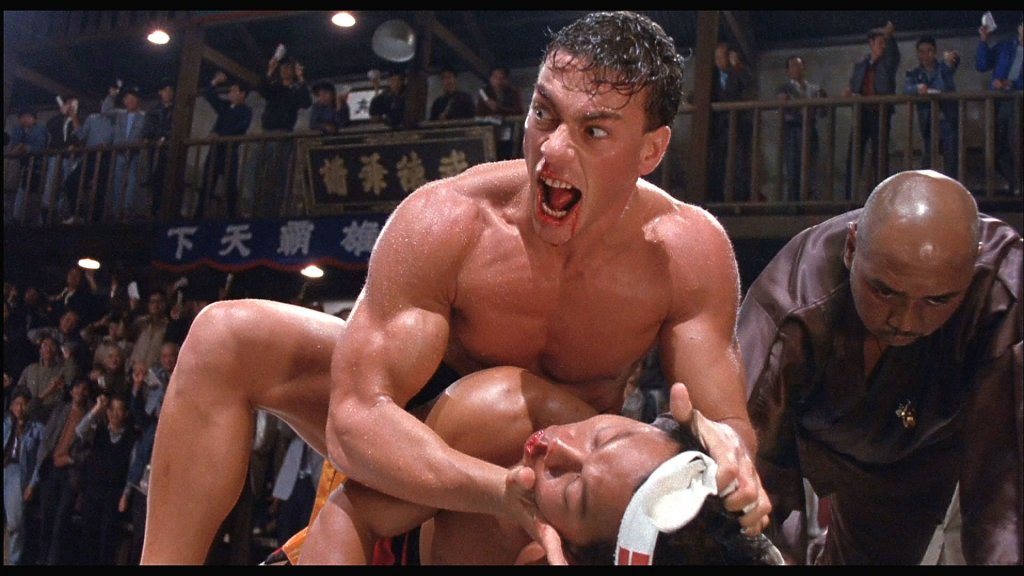
Midway to Hollywood: “Bring Me Jean-Claude Van Damme!”
Much like the tales of Frank Dux, the stories of the early days of Mortal Kombat’s development are sometimes twisted by legend. However, nearly all versions of the story come back to Jean-Claude Van Damme in one way or another.
Mortal Kombat‘s origins can be traced back to co-creators John Tobias and Ed Boon’s desire to make a fighting game featuring ninjas that would also allow them to utilize the kind of large character designs they emphasized in previous works.
Unfortunately, the initial pitch for that project was rejected by Midway for the simple reason that there seemed to be some doubt regarding the commercial viability of an arcade fighting game. Remember that this was all done before Street Fighter 2 really took over arcades, cemented itself as a game-changer, and inspired studios everywhere to start go all-in on the genre.
Instead, Midway decided to pursue an action game starring Jean-Claude Van Damme. The details of this part of the story sometimes get fuzzy, but it seems they specifically hoped to develop a game based on Van Damme’s Universal Soldier film. At the very least, the idea of adapting the mega star’s latest movie into a game must have seemed like a much more surefire hit than an unlicensed fighting title.
Recognizing an opportunity, Tobias and the rest of the four-person team that would go on to make Mortal Kombat decided to see if they could get Van Damme interested in the idea of starring in their martial arts game. Boon recalls that they even went so far as to send Van Damme a concept demo for that project by capturing a still of the actor from Bloodsport, cropping out the background, and replacing it with their own assets. There have even been reports that they were prepared to name their game Van Damme as the ultimate showcase of the star.
The idea fell through, and there seem to be some contradictory reports regarding exactly what happened. Boon once said that he’d heard Van Damme already had a deal in place with Sega that would conflict with their offer, but, as Boon notes, Sega clearly never released that game. If such a deal ever was in place, it seems nothing ever came from it. It’s also been said that Van Damme was too busy to model for the game’s digitized animations or was otherwise simply uninterested.
The entire Van Damme/Midway deal ending up falling apart, but there was a silver lining. Now given the time to properly recognize that the fighting genre was blowing up in arcades, Midway told Tobias, Boon, and the rest of the team to go ahead and work on their martial arts game, Van Damme be damned.
While Van Damme was technically out of the picture, the team at Midway were hardly ready to give up entirely on their idea of a fighting game inspired by Bloodsport
Read more
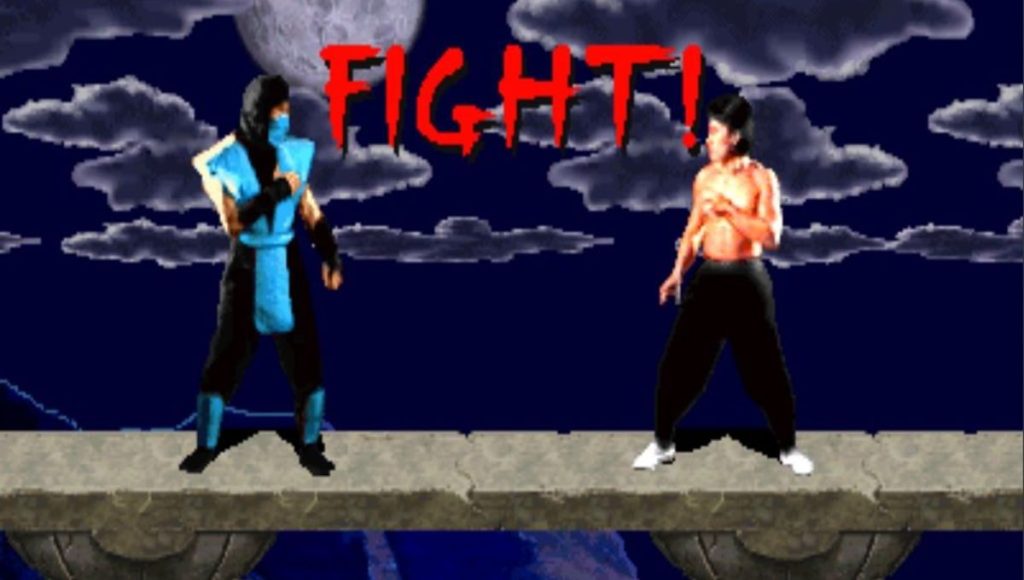
Mortal Kombat: A Bloodsport by Any Other Name
Mortal Kombat went by a lot of names in its earliest days (the most popular candidate in the early days was reportedly Kumite), but one thing that remained the same throughout much of the project’s development was the commitment to making it the anti-Street Fighter. Or, as Ed Boon once put it, to make it the “MTV version of Street Fighter.”
The logic was hard to argue against. If Street Fighter 2 was the best at what it did, then this game should be the exact opposite of it in every single way possible
What’s impressive are the ways the small MK team distinguished their project. They used digitized captures of actors, which is particularly impressive when you consider that they weren’t even working with green screens. They just filmed some actors (mostly people they knew with martial arts experience) performing moves against a concrete wall and then manually removed the real-life backgrounds. It wasn’t too far removed from the techniques they used to construct a demo of their idea for Jean-Claude Van Damme
Of course, you can’t talk about MK without eventually talking about the blood. The game’s use of gore was certainly intended to catch people’s attention, which it absolutely did. While the MK team didn’t quite anticipate how the combination of digitized actors and extreme gore would put MK at the center of an emerging debate about video game violence, they rightfully predicted that the game’s violence was one of those things that people would force people to stop and look when they walked by and saw the game in action.
What’s really funny, though, is how those two qualities helped MK capture the feel of Bloodsport in ways that seemed both intentional and perhaps happily accidental. Yes, MK’s origins prove that it was clearly inspired by Bloodsport, but the ways in which MK most meaningfully mimics Bloodsport often aren’t talked about enough.
In Bloodsport and MK, you have this martial arts adventure that feels both wonderfully dingy and strangely fantastical. Just as Bloodsport told the unbelievable story of a global tournament featuring larger than life participants but tempered it with visceral combat the likes of which no human could survive, MK combined sorcery and mythological creatures with decapitations and punishing uppercuts in a way that shouldn’t have worked but proved to be too enjoyable to at least not be fascinated with.
Even the “awkward” animations you sometimes have to suffer through as a result of MK‘s motion capture process captured the spirit of Bloodsport and the ways that it replaced the smooth moves of someone like Bruce Lee with a more impactful MMA-esque style complimented by moments of absurd athleticism. It’s almost certainly also no coincidence that the average MK combatant’s most athletic move was a sweep kick. After all, a famous Hollywood legend says JCVD was offered the Bloodsport role after showing off his kicks to a producer.
Of course, when it comes to any discussion about MK and Bloodsport’s relationship, we certainly don’t have to rely on possible coincidences and speculation. Not only was an early version of MK literally ripped from Bloodsport, but as it turns out, JCVD did end up appearing in the game…
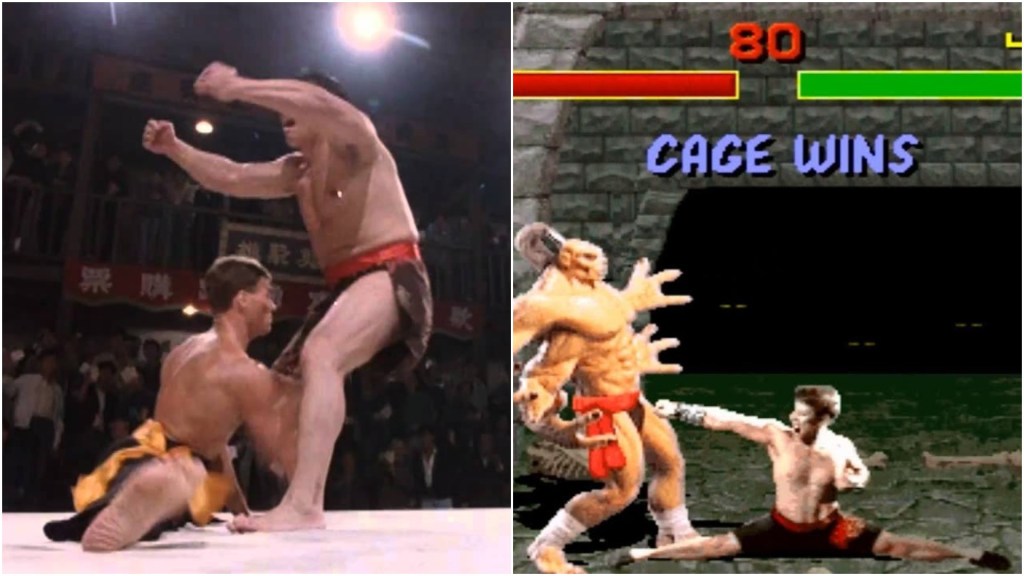
Johnny Cage: Jean-Claude Van Darn
If you step back and look at it, Mortal Kombat is basically the Super Smash Bros. for action stars of the ‘70s and ‘80s. Kano was a callback to The Terminator, Sonya Blade was seemingly based on the eternally underrated Cynthia Rothrock, Raiden was clearly inspired by Big Trouble in Little China (as was Shang Tsung), and Liu Kang was almost certainly a Bruce Lee substitute.
Then you have Johnny Cage. As a cocky movie star whose martial arts skills are largely based on his flexibility, it’s always been easy enough to suggest that Johnny Cage is a non-licensed nod to Jean-Claude Van Damme. Actually, many think that Johnny Cage is a bit of a mean-spirited parody of JCVD meant to mock him for turning the game down.
The truth is a little more complicated than that. Johnny Cage actually started as a character named Michael Grimm who was described as the “current box office champion and star of such movies as Dragon’s Fist, Dragon’s Fist II, and the award-winning Sudden Violence.” While his character model was reportedly also influenced by Iron Fist’s Daniel Rand, it seems that he was initially meant as a kind of broad substitute for the Western martial arts stars that took over the scene in the 1980s.
But yes, Johnny Cage is absolutely meant to be a parody of JCVD. I suppose where people lose the thread a bit is in the insinuation that he’s a jab at the star rather than an homage. While MK’s developers have said that Johnny Cage’s iconic “splits into a low blow” was absolutely a way to poke fun at JCVD and Bloodsport, it feels a little disingenuous to suggest the team was feeling bitter about not being able to put JCVD in their game and wanted to suggest that he was this star that was somehow too good for them.
What’s kind of funny, though, is that the rise, fall, and rise of Johnny Cage isn’t too dissimilar from what happened to JCVD. Van Damme was riding high in the early ‘90s on the back of films like Bloodsport, but a series of flops and some personal problems put his career in jeopardy later on. Similarly, Johnny Cage debuted as the prototypical Hollywood star but would fall from grace in the years that followed. He wasn’t even featured in Mortal Kombat 3 for the simple reason that he was the least selected character in MK 2.
Yet, over time, many people came to appreciate characters like Johnny Cage and actors like JCVD largely because they represented this golden age of absurd martial arts movies that weren’t always great (and were certainly usually a little problematic) but were ridiculous in a way that became much easier to love when weighed against increasingly self-serious genre works.
In his own way, Johnny Cage not only represents JCVD but the magic of a movie like Bloodsport and how such a silly little film could change everything because of (and not in spite of) its ridiculousness.
There’s another world in which JCVD became the digitized star of what would become Mortal Kombat, but due to a series of incredible circumstances, we don’t just need to project that reality on Johnny Cage to envision what that game might have looked like.

Bloodsport: The First Great Video Game Movie?
While it’s certainly funny enough that Jean-Claude Van Damme would go on to star in the Street Fighter movie after turning down what would become the first Mortal Kombat game, the cherry on the top of that story has to be the release of 1995’s Street Fighter: The Movie (the game).
That adaptation of the Street Fighter film bizarrely abandoned the design style of the Street Fighter games the movie was based on and was instead modeled after Mortal Kombat in an attempt to give Capcom a fighting game that could more directly compete with Midway’s runaway hit series. It failed spectacularly, but it did feature a digitized version of Guile as portrayed by JCVD in the Street Fighter movie. Van Damme even lent his moves for the game’s motion capture process.
Roughly four years after passing up the opportunity to star in Mortal Kombat (or Van Damme, as it would have likely been known), Van Damme ends up starring in a Mortal Kombat rip-off carrying the Street Fighter name. Call it a missed opportunity if you want, but to me, the bigger takeaway is that Van Damme may have missed the chance to recognize that he, Bloodsport, and Mortal Kombat were destined to be together long before the development of MK ever started.
See, there’s a scene in Bloodsport where Frank Dux and his new friend Ray play the 1984 arcade game Karate Champ. As one of the first successful arcade fighting games featuring multiplayer, Karate Champ would later be recognized as one of the fundamental pieces of the genre. John Tobias even said that Karate Champ was more of an influence on Mortal Kombat than Street Fighter was.
What gets me most about that scene, though, is the trash talk. Ray asks Frank Dux “Aren’t you a little young for full contact?” Frank counters, “Aren’t you a little old for video games?” They settle by playing another round.
It’s a simple sequence that’s hard not to look back on as an early indication that the popularity of films like Bloodsport would directly influence of new era of fighting games defined by competitiveness, arcade trash talk, and advancing technology that would inspire fans and developers to replicate the feel of being at the Kumite or, in our world, in a movie like Bloodsport.
In the same way that Mortal Kombat is basically an unofficial Bloodsport game, maybe it’s time to look back at Bloodsport as a kind of unofficial video game movie. After all, it may have debuted at the end of a strange kind of golden era for Hollywood martial arts films, but it was just the beginning of the golden age of fighting games.
